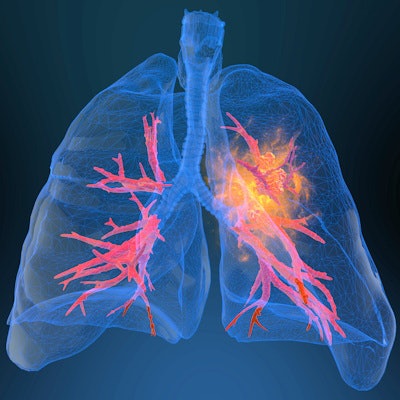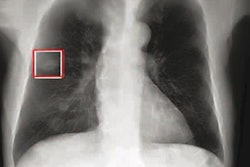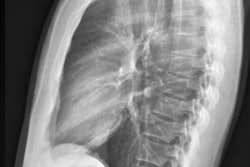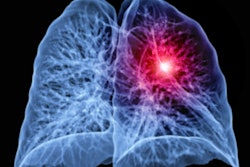
Artificial intelligence (AI)-based computer-aided diagnosis (CADx) software could help detect lung cancer sooner on CT while also improving specificity, according to research published September 3 in the Journal of the American College of Radiology.
After conducting tests on multiple datasets, a multi-institutional team of researchers found that a commercial software application that utilizes CT radiomics analysis outperformed risk assessment based on Lung-RADS criteria alone for lung nodules detected incidentally or during screening. This improvement was achieved independent of existing radiological and clinical variables, according to first author Dr. Scott Adams, PhD, of the University of Saskatchewan in Saskatoon, Canada, and colleagues.
"These results suggest the generalizability and potential clinical impact of a tool that is straightforward to implement in practice," the authors wrote.
In an effort to determine if AI-based software could improve precision in classifying lung nodules as benign or malignant on CT, the researchers assessed the performance of version 1.1 of RevealAI software (RevealDx). The CADx software produces a malignancy risk score -- called malignancy Similarity index (mSI) -- for individual lung nodules based on radiomics analysis. It was trained using imaging data from the National Lung Screening Trial (NLST).
The researchers tested the software on NSLT cohorts, as well as an external dataset from a tertiary referral lung cancer screening program and a nonscreening dataset of all nodules detected on CT. The screening dataset was assembled from the Fred Hutchinson Cancer Research Center, while the nonscreening dataset contained lung nodules shown on unenhanced as well as contrast-enhanced CT exams acquired from three hospitals in Saskatoon.
They then compared the combined risk classification performance of the software and Lung-RADS classification with that of Lung-RADS alone as well as the Mayo and Brock risk calculators.
The study included an aggregate of 968 patients and 1,168 nodules. In the NLST dataset of 704 nodules, the combination of the software's mSI score and the Lung-RADS risk classification yielded an area under the curve (AUC) of 0.89, which was comparable to the risk calculators (AUC, 0.86-0.88) and significantly better than Lung-RADS alone (AUC, 0.82).
Across all cohorts, the use of the software along with Lung-RADS led to an increase in sensitivity ranging from 25%-117% compared with Lung-RADS alone. In the screening cohorts, the software increased specificity by a range of 17%-33%.
The researchers found that the use of the software with Lung-RADS could have diagnosed 42% of the malignant nodules in the NLST dataset from prior-year CT scans.
"Augmenting Lung-RADS with an AI CADx tool can eliminate the diagnostic delay of interval scans in 35-45% of cancer patients across cohorts," the authors wrote. "The simultaneous improvements in specificity can limit the patient burden and financial cost of unnecessary follow-up procedures."
The results also demonstrated generalizability across populations and CT acquisition parameters, according to the researchers.
Finally, the "AI tool provided additional predictive markers not evident in commonly used risk calculators, and maintained performance at low risk thresholds where such calculators have reduced value," they wrote.




















